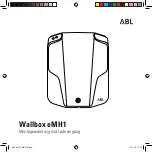
Pro
te
c
t
ed
b
y
co
p
y
rig
h
t.
C
o
p
y
in
g
fo
r
pr
iv
a
t
e
o
r
c
o
m
m
e
r
c
ia
l
p
u
rp
o
s
e
s
,
i
n
p
a
rt
o
r i
n
w
h
o
le
,
is
n
o
t
p
e
r
m
it
t
e
d
u
n
l
e
s
s
a
ut
ho
r
i
s
ed
b
y
V
olk
sw
a
ge
n AG
.
V
olk
s
w
a
g
en
AG do
es
n
ot g
uar
ante
e
or a
c
c
ep
t
a
ny
li
a
b
i
li
t
y
w
ith
r
e
s
p
e
c
t
t
o
th
e
c
o
rr
e
c
t
n
e
s
s
o
f
in
fo
r
m
a
tio
n
in
th
is
d
o
c
um
en
t.
C
o
py
rig
ht b
y
V
olk
sw
a
ge
n
A
G.
1.4
Releasing pressure in high-pressure
area
WARNING
The injection system consists of a high-pressure section (max‐
imum approx. 120 bar) and a low-pressure section (approx. 6
bar).
Prior to opening the high-pressure area, e.g. when removing
the fuel pressure sender -G247- , the fuel pressure in the high-
pressure area must be reduced to a residual pressure of
approx. 6 bar. The appropriate procedure is described as fol‐
lows.
– Connect vehicle diagnostic tester and then carry out Guided
Fault Finding, „Reducing high fuel pressure“.
– Switch off ignition.
WARNING
The fuel lines are pressurized! Wear eye protection and pro‐
tective clothing to avoid eye injuries and skin contact. Before
opening the high-pressure section, wrap a cloth around the
connection.
– Now place a clean cloth around the connection and carefully
open the connection to release the residual pressure of ap‐
prox. 6 bar. Catch the escaping fuel.
– After completing work, read fault memory of engine control unit
and clear all fault entries.
Note
If the fault memory was cleared, the readiness code must be gen‐
erated ⇒ vehicle diagnosis tester „Guided functions“.
Amarok 2011 ➤
4-cylinder injection engine (2.0 l direct injection engine, turbocharger) - Edition 02.2011
1. General notes on fuel system
161
















































